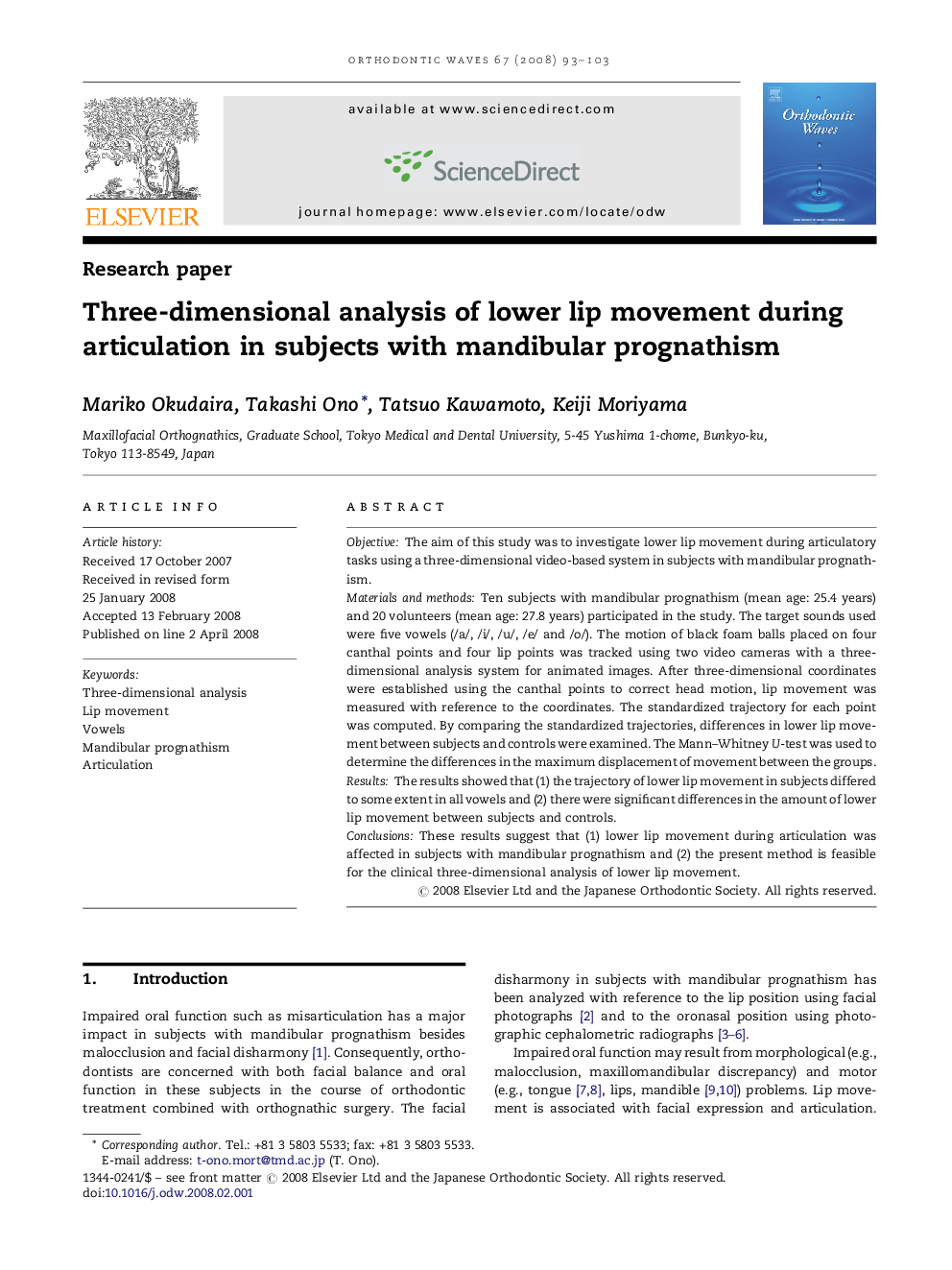| Article ID | Journal | Published Year | Pages | File Type |
|---|---|---|---|---|
| 3170671 | Orthodontic Waves | 2008 | 11 Pages |
ObjectiveThe aim of this study was to investigate lower lip movement during articulatory tasks using a three-dimensional video-based system in subjects with mandibular prognathism.Materials and methodsTen subjects with mandibular prognathism (mean age: 25.4 years) and 20 volunteers (mean age: 27.8 years) participated in the study. The target sounds used were five vowels (/a/, /i/, /u/, /e/ and /o/). The motion of black foam balls placed on four canthal points and four lip points was tracked using two video cameras with a three-dimensional analysis system for animated images. After three-dimensional coordinates were established using the canthal points to correct head motion, lip movement was measured with reference to the coordinates. The standardized trajectory for each point was computed. By comparing the standardized trajectories, differences in lower lip movement between subjects and controls were examined. The Mann–Whitney U-test was used to determine the differences in the maximum displacement of movement between the groups.ResultsThe results showed that (1) the trajectory of lower lip movement in subjects differed to some extent in all vowels and (2) there were significant differences in the amount of lower lip movement between subjects and controls.ConclusionsThese results suggest that (1) lower lip movement during articulation was affected in subjects with mandibular prognathism and (2) the present method is feasible for the clinical three-dimensional analysis of lower lip movement.
